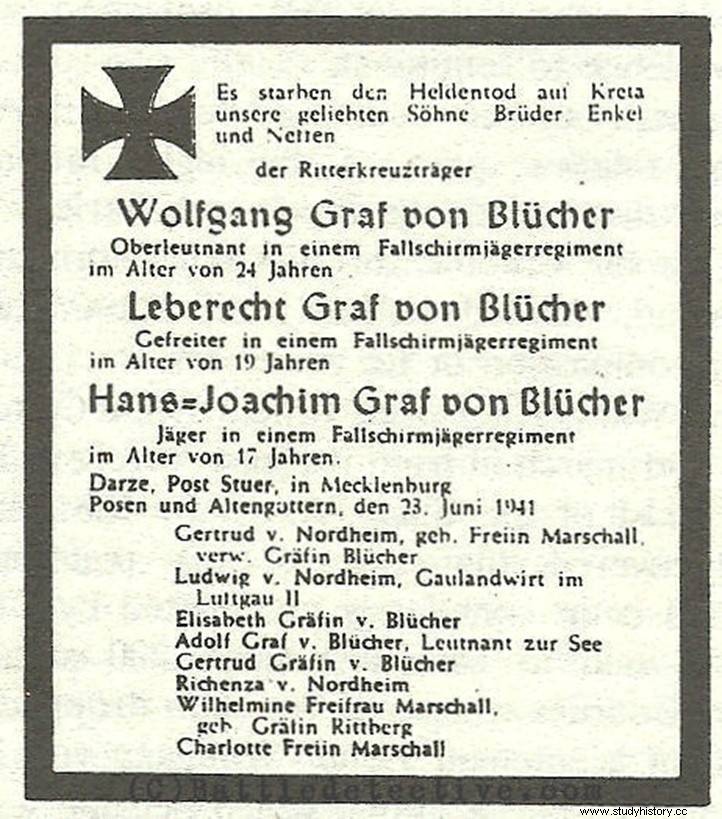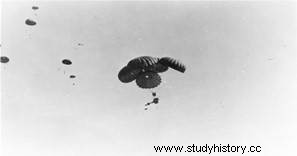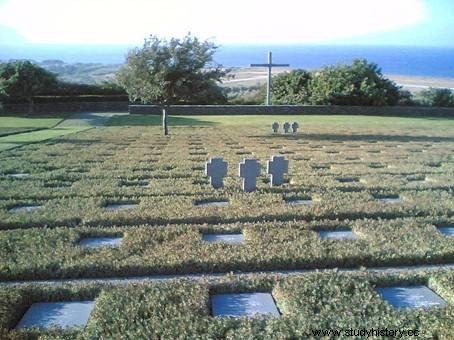The war is terrible because the closest ones are killed in it:fathers, husbands, sons and brothers. Sometimes a mournful telegram sent by the commander comes to the house of a fallen soldier, sometimes there is no information about the missing soldier for many years. It also happens that a mother receives information about the death of three sons on one day.
The story of the search for one soldier in the middle of a great battle told in the movie "Saving Private Ryan" is not a fingerprint. Steven Spielberg was inspired by the story of the four Niland brothers , famous in the USA , two of whom (Robert and Preston) died in Normandy on 6 and 7 June 1944, and the third (Edward) was captured by Japan in Burma and was pronounced dead.
High Command decided to evacuate the fourth brother, Frederick Niland, from the front lines so that the mother would not have to mourn the loss of all her sons. He lived to see the end of the conflict by serving safely in the military police in the United States. After the war, Edward also returned from captivity.
There were four of us
A similar story shocked the aristocratic German Blücher family. In this case, however, the mother was not as lucky as Mrs. Niland. Her three sons:Wolfgang, Leberecht and Hans-Joachim died one day, several hours apart, in the Battle of Crete . The fourth - although an attempt was made to save him by sending him home from the front - also suffered a bad fate.
The brothers in question were descendants of Gebhard Leberecht von Blücher, the Prussian marshal who defeated Napoleon at the Battle of Waterloo. In such a family, a military career was obvious. Male members of the family served in the army under all circumstances - also during Hitler's rule. Three of them went to the Luftwaffe parachute unit, the fourth was in the Kriegsmarine.
The eldest brother, Wolfgang Henner Peter Lebrecht Graf von Blücher, was born in 1917. In the family he was called "Wolf". In 1940, he entered the Fallschirmjäger voluntarily. He fought in Norway and the Netherlands, where he won the Knight's Cross and the Iron Cross. After these campaigns, he returned home to rest, but was reinstated in preparation for the attack on Greece.

Obituary of the von Blücher brothers, German newspaper, June 1941
His middle brother, Leberecht Wilhelm Konstantin Wolf Axel Graf von Blücher, was born in 1922. During World War II, he initially served in the Kriegsmarine, but after disembarking, he followed in Wolf's footsteps and also became a paratrooper.
The youngest, Hans-Joachim Gebhard Leberecht Graf von Blücher, was born in 1923. With his eyes on his older brothers, he dropped out of school and - with his mother's consent - also joined the elite parachute units . In 1941, when he was about to make his first combat jump, he was only 18 years old. The landing in Crete was also Leberecht's first combat mission.
Operation Mercury
The German landing on Crete, known as Operation Mercury, began on May 20, 1941. The aim of the attack was to capture a Greek island strategically located in the eastern Mediterranean. 22,000 German soldiers and nearly 1,200 aircraft took part in the operation. The island was defended by 40,000. allied soldiers: British, New Zealand, Australian and Greek and ad hoc local self-defense units.
It was supposed to be a combined aero-sea operation, but - as it turned out - all the ships carrying the landing were sunk or scattered by the British Navy. In this situation, only the so-called airmobile units:soldiers dropped by parachutes and flown from mainland Greece by landing sailplanes.
The landing was supported by bomber and assault aviation. The Germans did not have tanks and heavy weapons in Crete. They were dropped on parachutes with light anti-tank guns (e.g. 3.7 cm PaK 36 and 7.5 cm LG40 recoilless rifles), and even motorcycles that were supposed to tow the guns, but there were few of them. Some of the "heavier" equipment was immediately thrown into the hands of the English. In this battle, both sides used vehicles and equipment captured from the enemy. Horses, donkeys and mules were used as means of transport .
Operation Mercury, although it ultimately ended in victory for the Germans and the conquest of all of Crete, was a true bloody slaughterhouse for the Fallschirmjägers. Since the parachutes could not be guided in flight, many jumpers landed between the defenders' posts, where they were immediately killed. Others, who landed one at a time in different parts of the island, were either captured and taken prisoner or shot on the spot.

3.7-cm-PaK 36 cannon drop using parachutes, Crete, May 1941.
Hundreds of paratroopers died in bloody assaults on well-fortified defender positions. The commander of the 23rd battalion himself, Lt. Col. D.F. Leckie, killed five Germans with a revolver, who landed in his command post . The 28th Battalion Maori stationed at Platanias were particularly accurate - as the Germans later stated, a terrifyingly large number of paratroopers were shot directly in the head - write the authors of "Hitler's Paratroopers."
After the fighting, the Germans counted 3,300 killed and 2,600 wounded. They also lost 350 transport planes, which was a severe loss as further operations of this type were impossible. Hitler decided that large parachute landings "exhausted their formula" and decided not to carry out such activities on a larger scale. German paratroopers jumped in combat only as part of ad hoc operations and special missions . Larger amphibious operations were carried out only in 1943 on Leros and Kos, but they were no longer relevant to the fate of the war.
Only one left
Three of the Blücher brothers were among the 3,000 paratroopers killed in Crete. They all died in the vicinity of Heraklion, all on the same day - May 21, 1941 (the second day of the landing).
According to later findings, one of the brothers (Hans-Joachim) attempted to deliver ammunition and bandages to the detachment of his brother, Wolfgang, cut off by the English from the Black Watch regiment. He hung the ammunition crates on the captured horse, mounted it, and galloped towards the encircled horses. Both the rider and the horse were hit in the last meters of this maddening charge , just before the German positions.
Wolfgang von Blücher managed to find out who was helping, and then he himself died. On the same day, his third brother, Leberecht, whose unit landed under fire from British tanks, also died. Leberecht's body was never found.
As of May 19, the family had no life signal from the three paratroopers. It wasn't until four weeks later that Gertrude von Nordheim (widow of Count von Blücher) received a letter stating that her three sons had died .
The fourth son, Adolf Graf von Blücher, was immediately withdrawn from the Kriegsmarine unit in which he served and sent home. However, he also did not live to see the end of the war. He died in 1944 from an accidental shot while hunting.
Late letter
The Germans stayed in Crete until the end of the war. The Allies made no attempt to capture the island, bearing in mind the massacre during Operation Mercury. The island's garrison did not surrender until May 12, 1945.
In 1974, under international agreements, the German War Cemetery was opened in Maleme, Crete. Two Blücher brothers are buried there. Their remains were placed in a common grave. The third brother, whose body has not been found, is commemorated on the epitaph board. Several hundred guests from Germany attended the opening ceremony of the cemetery. Among them was Gertrud Freifrau von Ketelhodt (née von Blücher), sister of fallen paratroopers.

German War Cemetery in Maleme, Crete.
“On May 19, two days before the mission, Wolf sent us from a letter from Athens. When the package arrived a few days later, my brothers were already dead, "she recalled.
While on vacation in Crete, it is worth paying attention to the traces and souvenirs from the battle for the island and the German occupation. Among the Cretans, the memory of these events is still alive. The grave of the Blücher brothers is easy to find in the cemetery in Maleme.
Bibliography:
- Beevor, Crete. Conquest and Resistance , Mark.
- Nowakowski, M. Skotnicki, Hitler's paratroopers. German airborne operations during World War II , Bellona.
- Jarmoła, Kreta 1941 , Bellona.
- Antill, Kreta 1941. Attack of the German paratroopers , Amercom.
